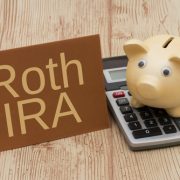Why Do Self-Directed IRA Investors Use Tax Liens and Deeds for Retirement Investing?
For most retirement investors, the idea of using a Tax Lien to generate retirement income might seem like a foreign idea. After all, most people are not Tax Lien investors. But as CNBC noted a few years back, “more than $14 billion in property taxes goes unpaid across the United States.” It’s a larger asset class than many people might imagine. And because the rules of a Self-Directed IRA make it possible to invest in Tax Liens, it’s something that retirement investors should know about.
What are Tax Liens?
When someone fails to pay their property taxes, the local government might place a lien on them for the amount of taxes owed. In this case, the individual responsible for the property taxes has to pay them back with a certain interest rate on the late payments, or they risk losing the property altogether.
From the investor’s perspective, it’s possible to come in and purchase the lien on the property. This results in the local government getting the money it is owed; meanwhile, the debt owed on the property becomes the asset of the Self-Directed IRA of the person who made the Tax Lien purchase. In this case, whenever someone pays off the taxes, that money can go to the person who then owes that debt as an asset, the Self-Directed IRA. As we put it on our Tax Lien investing page, you can think of this as having the local government tax collectors working to put that money in your Self-Directed IRA’s pockets.
What happens if the person in question is unable to pay off the debt? In that case, the property may enter foreclosure, in which case it becomes possible that your Self-Directed IRA will assume ownership of the property in question. Here’s how we put it on our Tax Lien investing page: “Investors also enjoy the possibility that the property owner might not redeem the property which means, in many states, that the investor becomes the owner of the property by foreclosing on the first position Tax Lien.”
Why Does Tax Lien Investing Appeal to Self-Directed IRA Holders?
For starters, Tax Lien investing can be a relatively hands-off way to realize an income within one’s Self-Directed IRA. If a taxpayer is making payments promptly, for example, that means regular payments go into the Self-Directed IRA of the investor. And these payments often come with high interest rates, which creates the possibility for ambitious returns within the Self-Directed IRA.
In fact, many states create limits on the Tax Lien interest amounts because these can be so high. In some states, there may be guaranteed amounts per month, which gives the investor some degree of confidence. And because there is option of foreclosure, investors have some confidence that they will be able to recover a lot of value out of the investment.
As with any investment, there are potential risks. For example, taking over the property and even evicting the current people at the property can create complications for the Self-Directed IRA investor. However, if you know what you are getting into and the strategies for dealing with these complications, it can be a perfectly valid way of putting aside money for retirement.
Tax Liens may sound complicated, but the underlying processes behind them are relatively simple to understand. However, like with any retirement investment strategy, it’s up to investors to know what they are getting into and do their homework before beginning.
Interested in learning more about Self-Directed IRAs? Contact American IRA, LLC at 866-7500-IRA (472) for a free consultation. Download our free guides or visit us online at www.AmericanIRA.com.







